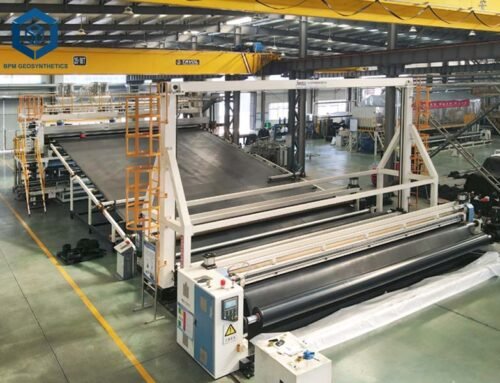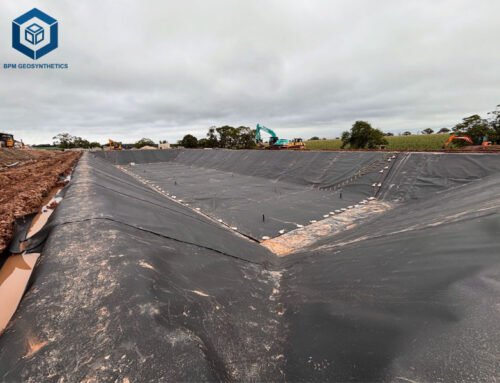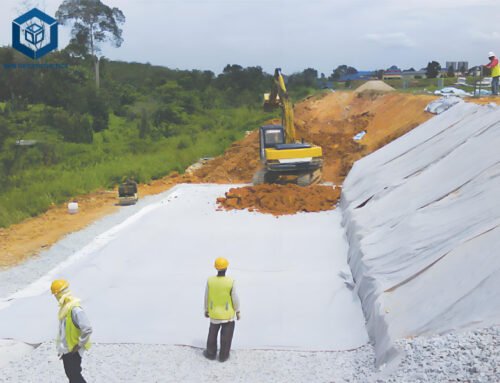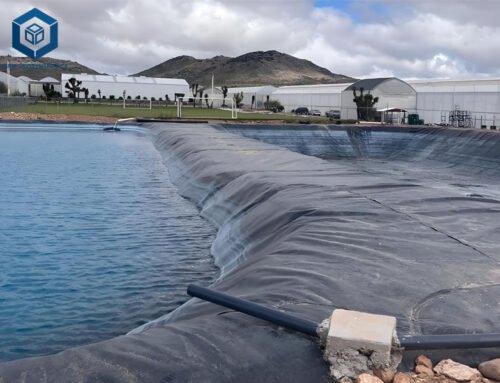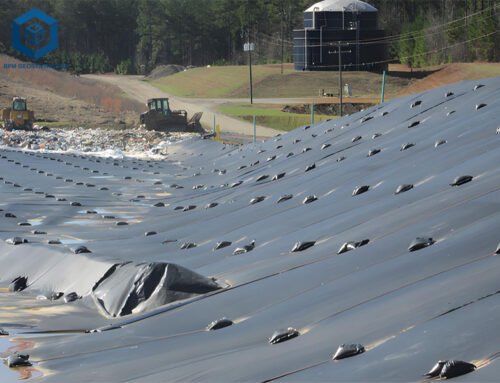In the dynamic world of civil engineering and construction, the judicious selection of materials is paramount to ensuring the stability, longevity, and cost-effectiveness of infrastructure projects. Among the most pivotal innovations in modern geotechnical engineering are geosynthetics, a broad category of synthetic products used to improve ground conditions. Within this expansive family, geogrids and geotextiles stand out as indispensable tools, often used interchangeably in common parlance but possessing fundamentally distinct functions, properties, and applications.
Understanding the precise differences and synergistic potential of geogrids and geotextiles is critical for engineers, contractors, and project developers. This comprehensive guide delves deep into the characteristics, capabilities, and optimal uses of Differences Between Geogrid And Geotextile. By dissecting their individual strengths, commonalities, and key differentiators with data-driven insights, we aim to provide readers with the detailed knowledge necessary to make informed decisions for robust and sustainable infrastructure development.
1. What is a Geogrid?
A geogrid is a geosynthetic material characterized by an open, grid-like structure with large apertures (openings). Its primary function is reinforcement. Geogrids are designed to interlock with granular soil, aggregate, or other fill materials, creating a composite structure that significantly enhances tensile strength and load distribution. Unlike soil, which is strong in compression but weak in tension, geogrids are engineered to absorb and redistribute tensile forces, thereby preventing lateral movement and improving the overall stability of the reinforced soil mass.
The development of geogrids revolutionized ground improvement techniques, offering a cost-effective and efficient alternative to traditional methods of increasing soil bearing capacity and stability. They are typically manufactured from high-modulus polymers such as polyester (PET), polypropylene (PP), or polyvinyl alcohol (PVA), chosen for their high tensile strength, creep resistance, and durability in various ground conditions.
Types of Geogrids:
Geogrids are categorized based on their manufacturing process, aperture shape, and the direction of their primary strength.
- Uniaxial Geogrids (UX):These geogrids possess high tensile strength in one primary direction (longitudinal). They are manufactured by stretching a polymeric sheet in a single direction.
- Typical Applications:Primarily used in applications requiring strength in one direction, such as reinforced soil retaining walls, steep slopes, and embankments, where the primary load is uniaxial.
- Biaxial Geogrids (BX):Exhibiting high tensile strength in both longitudinal and transverse directions, biaxial geogrids are produced by stretching a polymeric sheet in two perpendicular directions. They have square or rectangular apertures.
- Typical Applications:Ideal for pavement reinforcement, base stabilization in roads and railways, and foundation improvement where load distribution is multi-directional. Tensar’s invention of biaxial geogrids in the late 1970s significantly advanced road construction.
- Triaxial Geogrids (TX):A newer generation of geogrids, like Tensar’s TriAx geogrid (introduced in 2007), features triangular apertures and multiaxial stiffness properties, offering improved aggregate interlock and load distribution in multiple directions (typically three principal directions).
- Typical Applications:Advanced base stabilization and pavement reinforcement, providing superior performance in reducing rutting and extending pavement life.
- Woven Geogrids:Made by weaving polymeric yarns (e.g., polyester or polypropylene) into a grid pattern. These can be uniaxial or biaxial.
- Extruded Geogrids:Produced by punching holes in a polymeric sheet and then stretching it. This process creates integral junctions, which enhance junction strength and load transfer efficiency.
Key Properties and Specifications of Geogrids:
The performance of a geogrid is defined by several critical engineering properties, typically quantified through standardized testing (e.g., ASTM, ISO, GRI):
- Tensile Strength (kN/m):The maximum load a geogrid can withstand before breaking, measured in kilonewtons per meter of width. Uniaxial geogrids can have tensile strengths ranging from 20 kN/m to over 300 kN/m, while biaxial geogrids typically range from 20 kN/m to 80 kN/m in both directions. Polyester geogrids can even reach up to 1250 kN/m for specialized applications.
- Junction Strength:The strength of the connection points where the ribs intersect. This is crucial for load transfer and overall system integrity. GRI-GG2 is a standard for evaluating junction strength.
- Aperture Size and Geometry:The size and shape of the openings in the grid, which allow for the mechanical interlock with the soil particles. Optimal aperture size is critical for effective aggregate confinement.
- Rib Stiffness:The rigidity of the individual ribs, influencing the geogrid’s ability to resist buckling and provide lateral confinement.
- Creep Resistance:The ability of the geogrid to resist deformation under sustained load over time. Polymers like polyester exhibit excellent creep resistance.
- Durability:Resistance to physical, chemical, and biological degradation (e.g., UV exposure, chemical attack from soil or water, biological activity). Carbon black is often added for UV resistance.
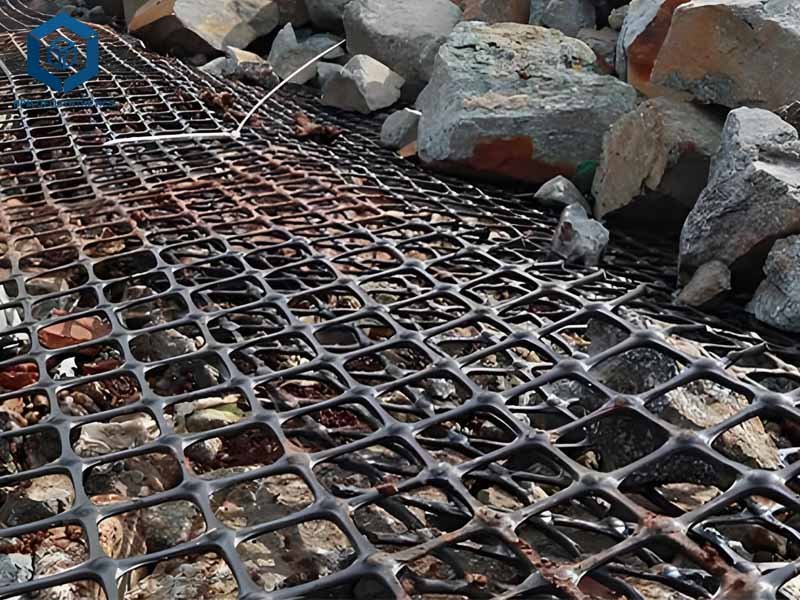
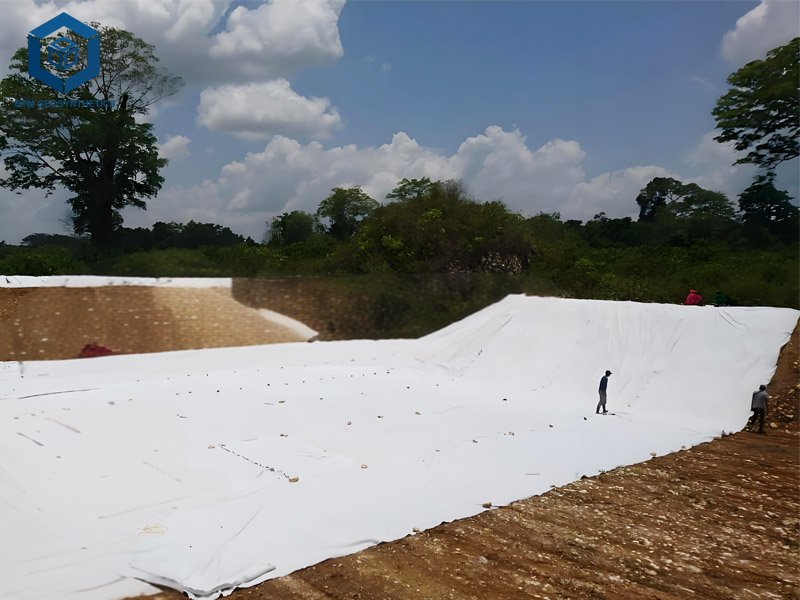
2. What is a Geotextile?
A geotextile is a permeable textile material used in conjunction with soil, rock, or earth as an integral part of a civil engineering project. Unlike geogrids, which primarily reinforce, geotextiles perform a broader range of functions, including separation, filtration, drainage, and protection. They are essentially flexible fabrics made from synthetic polymers such as polypropylene (PP) or polyester (PET), designed to allow fluids to pass through while retaining soil particles.
Geotextiles revolutionized how engineers approach soil stabilization, erosion control, and drainage, offering versatile solutions that can improve project performance and extend infrastructure lifespan. Their development provided a simple yet effective way to prevent intermixing of dissimilar soil layers, manage water flow, and stabilize subgrades.
Types of Geotextiles:
Geotextiles are broadly categorized based on their manufacturing process, which dictates their physical properties and primary functions:
- Woven Geotextiles:Produced by interlacing two sets of parallel strands (yarns or slit films) at right angles, similar to conventional fabric. They typically have a relatively uniform opening size (Percent Open Area – POA) and higher tensile strength compared to nonwoven types.
- Characteristics:High tensile strength, low elongation, good load distribution, and excellent separation properties, especially for bridging over weak subgrades. They are also known for good clogging resistance.
- Typical Applications:Roadway stabilization, railway track beds, erosion control, and as a separation layer beneath riprap or aggregate.
- Nonwoven Geotextiles:Manufactured by bonding fibers together through needle-punching, heat bonding, or chemical bonding. They have a random fiber orientation and a more irregular pore structure.
- Characteristics:High permeability, excellent filtration and drainage capabilities, good puncture resistance, and elongation. They are softer and more flexible than woven geotextiles.
- Typical Applications:Drainage systems (french drains, retaining wall drainage), filtration for erosion control, separation layers, and as a protective layer for geomembranes (e.g., in landfills or ponds).
- Knitted Geotextiles:Produced by interlocking a series of loops of yarn, often with a two- or three-dimensional structure. They are less common than woven or nonwoven types.
- Characteristics:Good flexibility and elongation, and can be designed for specific reinforcement or drainage applications.
- Typical Applications:Primarily used in specialized reinforcement applications, often as composite materials.
Key Properties and Specifications of Geotextiles:
The performance of a geotextile is defined by its mechanical, hydraulic, and durability properties:
- Tensile Strength (kN/m or lbs):The maximum load a geotextile can withstand before breaking. While some high-strength woven geotextiles can have tensile strengths comparable to lower-end geogrids (e.g., woven polypropylene geotextiles up to 320 kN/m), geotextiles generally prioritize other functions over pure reinforcement. ASTM D4632 (Grab Tensile Strength) or ASTM D5035 (Wide Width Tensile Strength) are common tests.
- Elongation (%):The percentage increase in length before breaking. Nonwoven geotextiles typically have high elongation (50-100%), while woven geotextiles have lower elongation (15-25%).
- Permittivity (sec⁻¹):A measure of the rate at which water flows through a geotextile normal to its plane, per unit head. This is crucial for filtration and drainage applications. ASTM D4491 is a standard test method. Typical values range from 0.05 to 2.0 sec⁻¹.
- Apparent Opening Size (AOS) or O₉₅ (mm or µm):The equivalent diameter of the smallest glass beads that would pass through the geotextile. This parameter defines the filtration capability, ensuring it retains soil particles while allowing water to pass. ASTM D4751 is the standard. Typical values range from 75 µm to 600 µm for filtration.
- Puncture Resistance (lbs):The ability of the geotextile to resist damage from localized forces, measured by the CBR Puncture Test (ASTM D6243) or Cone Drop Test (ASTM D4833). This is crucial for protection functions. Values can range from 150 lbs to over 800 lbs.
- Mass Per Unit Area (g/m² or oz/yd²):Also known as grammage or weight. A common indicator of material density and often correlated with robustness. Ranges from 100 g/m² to over 800 g/m². ASTM D5261 or D3776.
- Durability:Resistance to UV degradation (carbon black content, ASTM D1603/D4218), chemical attack, and biological degradation. Modern synthetic geotextiles are highly resistant to these factors.
3. What Are the Similarities of Geogrid and Geotextile?
Despite their distinct primary functions, geogrids and geotextiles share several fundamental characteristics that classify them under the umbrella of “geosynthetics” and contribute to their widespread use in civil engineering.
- Polymeric Composition:Both geogrids and geotextiles are predominantly manufactured from synthetic polymers. The most common materials include polypropylene (PP), polyester (PET), polyethylene (PE), and sometimes polyvinyl alcohol (PVA). These polymers are chosen for their excellent resistance to degradation from biological processes, chemicals (acids, alkalis), and environmental factors encountered in soil. This synthetic nature ensures long-term performance and durability in buried applications.
- Enhancement of Soil Performance:Both geosynthetics are deployed to improve the mechanical and hydraulic properties of soil. They fundamentally alter the behavior of problematic soils, allowing for more stable, durable, and cost-effective construction. While their mechanisms differ (reinforcement vs. separation/filtration), their ultimate goal is to enhance the overall performance of the soil structure.
- Durability and Longevity:Manufactured from robust synthetic materials, both geogrids and geotextiles are designed for long service lives, often exceeding the design life of the structures they support. Their resistance to rot, mildew, insects, and common soil chemicals ensures they retain their integrity for decades in buried conditions. For exposed applications, UV stabilization (typically with carbon black) is incorporated to maintain long-term performance.
- Contribution to Sustainable Construction:By improving soil properties, both geogrids and geotextiles can lead to a reduction in the need for expensive imported aggregates, minimize excavation and disposal of unsuitable soils, and decrease the overall carbon footprint of a project. They enable the use of marginal lands and optimize resource utilization, contributing to more sustainable engineering practices.
- Standardization and Quality Control:The geosynthetics industry is highly regulated with numerous national and international standards governing the testing, manufacturing, and application of both geogrids and geotextiles. Organizations like ASTM International, ISO (International Organization for Standardization), and GRI (Geosynthetic Institute) provide critical testing methods and specifications (e.g., ASTM D6637 for geogrid tensile properties, ASTM D4632 for geotextile grab tensile strength, ASTM D4491 for geotextile permittivity). These standards ensure consistent product quality and predictable performance.
4. What Are the Differences Between Geogrid and Geotextile?
While they share common ground as geosynthetics, the core differences between geogrids and geotextiles lie in their primary function, material structure, mechanical properties, and hence, their optimal applications.
4.1 Differences Between Geogrid And Geotextile – Primary Function and Mechanism:
- Geogrid: Reinforcement
- Mechanism:Geogrids primarily function as reinforcement. They are strong in tension and interlock mechanically with granular fill materials (like aggregate, crushed stone, or soil). This mechanical interlock creates a stable composite layer by confining the aggregate particles and preventing their lateral movement. When a load is applied, the geogrid distributes the stress over a wider area, effectively increasing the bearing capacity of the soil and enhancing stability. This is often referred to as a “mechanical stabilization” or “tensile reinforcement” mechanism.
- Geotextile: Separation, Filtration, Drainage, Protection
- Mechanism:Geotextiles are permeable fabrics with multiple functions.
- Separation:They act as a barrier between two dissimilar soil layers (e.g., subgrade soil and aggregate base course), preventing the intermixing of materials while allowing water to pass through. This maintains the integrity and drainage characteristics of each layer.
- Filtration:They allow water to pass through while retaining fine soil particles, preventing clogging of drainage systems or erosion of soil. This is achieved by maintaining specific pore sizes.
- Drainage:They can collect and convey water within the plane of the fabric (transmissivity) or allow water to pass perpendicularly through the fabric, facilitating the removal of excess moisture.
- Protection:They can cushion and protect geomembranes from punctures or abrasions caused by sharp aggregate or subgrade irregularities.
4.2 Differences Between Geogrid And Geotextile – Material Structure and Aperture Size:
- Geogrid:
- Structure:Characterized by large, regular, integral openings (apertures) that allow direct aggregate strike-through and interlock. The ribs are typically stiff and robust.
- Aperture Size:Aperture sizes are intentionally large (typically 10-100 mm) to enable mechanical interlock with aggregate particles.
- Geotextile:
- Structure:A continuous fabric (woven, nonwoven, or knitted) with much smaller pore openings or mesh sizes. Nonwoven geotextiles have a random fiber orientation, while woven ones have a distinct pattern.
- Aperture Size:Pore sizes are much smaller (typically 75-600 micrometers for filtration) designed to prevent soil particle migration while allowing water to pass.
4.3 Differences Between Geogrid And Geotextile – Tensile Strength and Strain Characteristics:
- Geogrid:
- Tensile Strength:Designed for high tensile strength at low strain (typically 2-5% elongation at peak strength). This high stiffness at low strain is critical for effective soil reinforcement, as it limits deformation of the reinforced soil mass. Uniaxial geogrids can have strengths up to 300 kN/m or even higher, while biaxial geogrids are balanced in both directions (e.g., 30-40 kN/m in both directions).
- Geotextile:
- Tensile Strength:While some woven geotextiles can achieve considerable tensile strength (e.g., up to 320 kN/m for specialized woven PP), their primary function is not typically pure reinforcement at low strain. Nonwoven geotextiles generally have lower tensile strengths (e.g., 20-100 kN/m) but higher elongation (up to 50-100%), making them more flexible.
- Strain:Their higher elongation makes them suitable for applications where flexibility and conformation to irregular surfaces are more important than rigid reinforcement.
4.4 Differences Between Geogrid And Geotextile – Permeability and Drainage Capabilities:
- Geogrid:
- Permeability:Highly permeable in the plane (transmissivity) due to their open structure. They do not impede water flow vertically or horizontally, allowing water to pass through without resistance. They do not inherently filter soil fines.
- Drainage:While they allow water to pass, they do not inherently provide drainage filtration or separation functions like geotextiles. Their primary role is structural.
- Geotextile:
- Permeability:Designed to be permeable to water (measured by permittivity) while retaining soil particles (filtration). They can also provide in-plane drainage (transmissivity) for collecting and conveying water.
- Drainage:Excellent for drainage applications, preventing clogging of drainage systems by soil fines and facilitating water removal from saturated soils.
4.5 Differences Between Geogrid And Geotextile – Typical Applications:
- Geogrid Applications:
- Base Reinforcement:Roads, railways, and other paved areas where the granular base needs enhanced load distribution and reduced rutting.
- Retaining Walls:Reinforced soil walls and steep slopes, providing tensile strength to stabilize soil masses behind the wall face.
- Embankment Reinforcement:Stabilizing embankments constructed over soft subgrades.
- Foundation Improvement:Increasing the bearing capacity of weak foundation soils.
- Geotextile Applications:
- Separation:Preventing the intermixing of dissimilar soil layers (e.g., aggregate base from soft subgrade in roads).
- Filtration:Protecting drainage systems (e.g., French drains, subsurface drains) from clogging by fine soil particles.
- Drainage:Facilitating the removal of excess pore water pressure in retaining walls, embankments, or behind structures.
- Erosion Control:Acting as a filter layer under riprap or gabions, preventing soil loss on slopes or shorelines.
- Protection:Protecting geomembranes from punctures or abrasions.
- Sediment Control:Used in silt fences to filter runoff and retain sediment.
4.6 Differences Between Geogrid And Geotextile – Cost Implications:
- Geogrids:Generally higher in cost per square meter than geotextiles due to their specialized manufacturing process focused on high tensile strength at low strain and specific aperture geometries. The cost can range significantly based on type (uniaxial, biaxial, triaxial) and strength requirements. However, their use can lead to significant overall project cost savings by reducing aggregate thickness requirements (e.g., up to 50% aggregate reduction in pavement design) and construction time.
- Geotextiles:Typically more economical per square meter, especially nonwoven types which can range from $0.15 to $0.50 per square foot. Woven geotextiles, with higher strength, might range from $0.30 to $0.70 per square foot. Their cost-effectiveness lies in their multi-functional capabilities, enabling simpler designs for separation, filtration, and drainage.
5. When to Choose Which: Application-Specific Considerations
The choice between a geogrid and a geotextile, or indeed a combination of both, depends entirely on the specific engineering function required by the project.
Roadway and Pavement Construction:
- Geogrids:Primarily used for base reinforcement and subgrade stabilization. Biaxial or triaxial geogrids are placed within the aggregate base course (or directly on a weak subgrade) to interlock with the aggregate, distributing loads over a wider area. This reduces the required thickness of the aggregate layer, prevents rutting, and extends the pavement’s service life. For example, using a geogrid can reduce aggregate layer thickness by 20-50%, leading to substantial material and transportation cost savings.
- Geotextiles:Primarily used for separation and filtration. A woven geotextile placed directly on the subgrade prevents the intermixing of the finer subgrade soil with the coarser aggregate base. This maintains the aggregate’s drainage properties and prevents contamination, which would otherwise lead to premature pavement failure. Nonwoven geotextiles can also be used for drainage within the pavement structure.
Retaining Walls and Steep Slopes:
- Geogrids:Essential for reinforced soil retaining walls and steep slopes. Uniaxial geogrids are laid horizontally within the soil backfill, extending into the retained soil mass. They provide the necessary tensile strength to resist the lateral earth pressures, transforming the soil into a coherent, stable mass. The length of the geogrid layers and their vertical spacing are critical design parameters based on soil properties and wall height. For example, designs often specify multiple layers of geogrid with tensile strengths matched to the anticipated lateral forces, ranging from 20 kN/m to hundreds of kN/m for tall walls.
- Geotextiles:Can be used for separation and drainage behind retaining walls. A nonwoven geotextile can be placed vertically behind the wall face to filter water and prevent soil fines from clogging the drainage layer (e.g., gravel) immediately behind the wall, thus preventing hydrostatic pressure buildup. In some less critical slope applications, woven geotextiles can provide limited reinforcement or erosion control.
Drainage Systems:
- Geogrids:Not typically used directly for drainage. While their open structure allows water passage, they lack the filtration capabilities needed to prevent clogging of drainage aggregates.
- Geotextiles:Fundamental to efficient drainage systems. Nonwoven geotextiles are wrapped around perforated pipes in French drains, or placed around aggregate layers in trench drains, to filter fine soil particles while allowing water to flow freely into the drainage medium. They ensure the long-term effectiveness of the drainage system by preventing soil migration and clogging. Permittivity (ASTM D4491) is a key design parameter for drainage geotextiles.
Erosion Control and Sedimentation:
- Geogrids:Can be used for surface stabilization and vegetated erosion control on slopes by providing a structural matrix that holds soil and promotes vegetation growth. Their open apertures allow root penetration, enhancing long-term stability. For example, geogrids filled with pebbles can create robust erosion barriers on coastal slopes.
- Geotextiles:Widely used for erosion control and sediment retention. As a separation layer under riprap or gabions, they prevent scour and allow water to drain without soil loss. They are also used in silt fences (often woven geotextiles) to filter sediment from construction site runoff, protecting waterways. Geotextiles contribute to slope stability by preventing surface erosion from rainfall and runoff.
Landfill Applications:
- Geogrids:Used for reinforcement in landfill caps and liners, especially on steep slopes, to enhance stability and prevent sliding of waste or cover materials. They provide tensile strength to withstand gravitational and seismic forces, crucial for the long-term integrity of containment systems.
- Geotextiles:Perform multiple critical functions. They are used as protection layers beneath geomembranes to prevent puncture from subgrade irregularities or waste materials. They act as filtration layers in leachate collection systems, preventing clogging of drainage pipes. They also serve as separation layers between different waste or soil layers. Nonwoven geotextiles are particularly common for their protective and filtration capabilities.
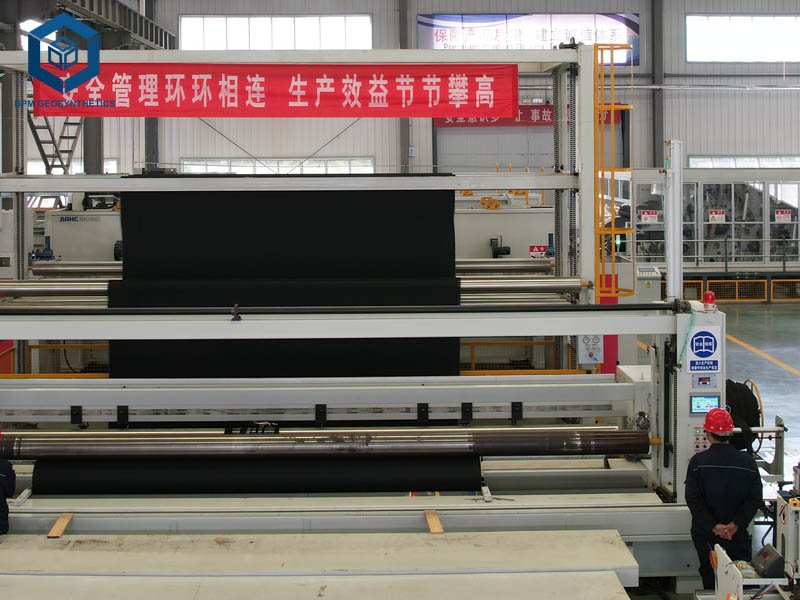
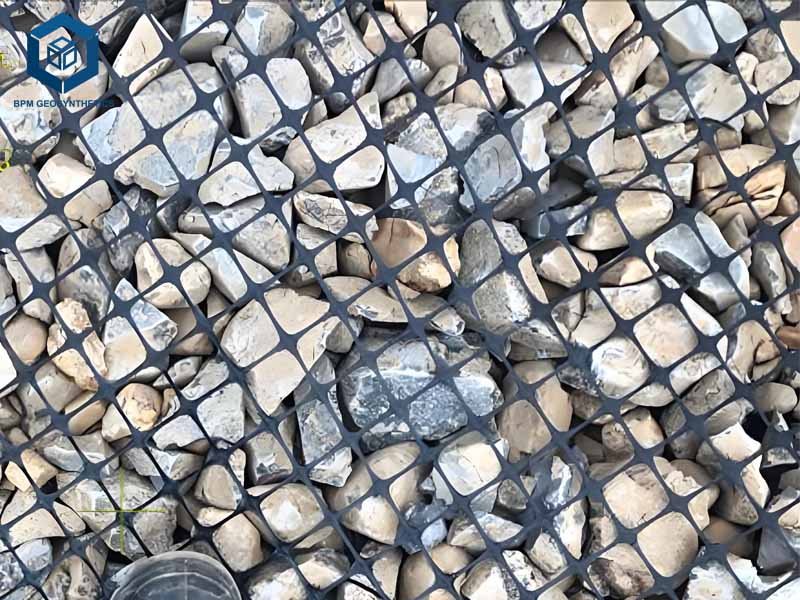
6. Conclusion
The ultimate comparison between geogrids and geotextiles reveals that they are not interchangeable but rather complementary tools in the geotechnical engineer’s arsenal. Geogrids, with their high tensile strength and open grid structure, excel at reinforcement by mechanically interlocking with granular materials to enhance bearing capacity and stabilize soil structures. Geotextiles, on the other hand, are permeable fabrics vital for separation, filtration, drainage, and protection, managing water flow and preventing intermixing of disparate soil layers.
The distinct properties and primary functions of each geosynthetic necessitate careful selection based on the specific engineering challenge at hand. While a project might call for a geogrid to reinforce a road base, it might simultaneously require a geotextile to separate the base from the subgrade or to filter a drainage system. Indeed, many complex civil engineering projects, such as reinforced slopes with integrated drainage, often leverage the synergistic benefits of both geogrids and geotextiles for optimal performance and long-term stability.
By understanding the nuanced capabilities and applications of geogrids and geotextiles, engineers and construction professionals can specify the right material for the right function, leading to more robust, efficient, and economically viable infrastructure solutions that meet the demanding requirements of modern construction while contributing to environmental sustainability. The data speaks clearly: precision in geosynthetic selection is not just a preference, but a prerequisite for success.If you have any questions, please contact BPM Geosynthetics.

